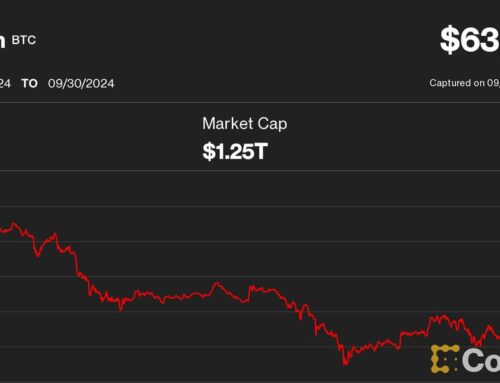Amid Australia’s chaotic climate politics, the rooftop solar boom is an unlikely triumph
September 30, 2024

Australia was a different place in 2011. Julia Gillard’s Labor government, the Greens and a couple of country independents were rewriting the country’s climate policies, including introducing a world-leading carbon pricing system and creating three agencies to back it up.
Those organisations – the Clean Energy Finance Corporation, the Australian Renewable Energy Agency and the Climate Change Authority – have survived and help shape the investment and policy landscape. The carbon pricing system – falsely described as a tax – famously didn’t.
Under the Tony Abbott-led Coalition, Australia became the first country to abolish a functioning carbon price following a campaign that his chief-of-staff, Peta Credlin, later admitted was based on a lie. More than a few people who wanted it scrapped in 2014 quietly regret that decision now, reasoning that a policy based on an unarguable truth – that carbon dioxide emissions have a cost on all of us, and that the cost should be included in the price of goods that pump out CO2 – would have been far better than the uncertainty and mess of the past decade.
Who could possibly have foreseen that? Again, more than a few people. But here we are.
A less-heralded consequential clean energy shift around this time was the decision to split the national renewable energy target in two. Created in 2001 by the Howard government, the target was significantly expanded after Labor was elected later that decade. In January 2011 it was divided into separate schemes to support large-scale renewable energy, which required the creation of solar and wind power stations, and small-scale household installations.
Both have been successes, but it’s the latter – driving Australia’s household rooftop solar boom – that sets the country apart.
It’s difficult to overstate how rapidly Australians have embraced solar power, and how much it has exceeded expectations. In 2011, the forecast was that rooftop solar would eventually contribute 4 terawatt hours of electricity. In the context of the Australian grid, this was next to nothing – barely 2% of total generation. For some, it raised the question of whether it was really worth the cost.
More than a decade on, that number has been eclipsed more than six times over in the five eastern states connected by the country’s main power grid. Rooftop solar panels connected to the National Electricity Market generated 24.6TWh over the last year of data.
Put another way, homes have contributed 11.6% of electricity – nearly as much as windfarms, comfortably more than large-scale solar farms or hydro plants, and twice as much as gas-fired power.
More than 3.7m households and small businesses have solar systems. It means more than one in three homes across the country generate their own power when the sun is out.
Data released by the Clean Energy Regulator last week suggests Australians will install 3.1 gigawatts of rooftop solar capacity this year, roughly continuing the recent pace. Industry group the Clean Energy Council points out that, in capacity terms, Australia now has more rooftop solar than coal-fired power.
after newsletter promotion
It is a wild, globe-leading success story that, as we’ve pointed out before, was something of a happy accident – the result of uncoordinated policies across federal and state governments. There were some initial stumbles, but the most important measure – an upfront national rebate that is processed by and paid to the installer that is progressively wound back as solar becomes more affordable – maintains wide support, including from both major political parties.
The rebate has helped bring down the cost to a level where a system can be effectively paid off via reductions in power bills, over about five years (with some variation depending on where you live). Combined with significant jumps in the cost of large-scale fossil fuel electricity – driven by Russia invading Ukraine, and gas and coal shortages and outages – it has made solar a financial no-brainer for home- and mortgage-owners who can pay the initial cost. Some states offer loans to make that easier.
The rooftop solar expansion will continue, with an expectation there will be more than 70GW connected by 2050. A key question is what lessons the country takes from how it got here.
One must be that any continual expansion needs to be equitable. With home ownership increasingly out of reach for many, Australia needs to consider innovative ways to make the benefits of solar available to renters and people in social housing. There have been some initial steps in this direction, but more will be required.
Another should be a reckoning on the role that household batteries will play in our future electricity supply. Batteries have not received the wave of government incentives that boosted solar. With some exceptions, they mostly still do not make financial sense for households. But analysts have pointed out the lesson from the solar success is that going hard early can bring unanticipated benefits, even while you adjust as you go.
As with the flood of solar energy in the middle of the day, an increase in household batteries – both standalone batteries and those in electric vehicles, which can be used in a similar way – will require changes in how power grids operate and are paid for.
Consumers are likely to be paid less for the electricity they feed into the grid and may be blocked from selling their excess power at peak times. On the upside, electricity use would become more flexible and more efficient.
Given we still run on a system designed to power homes and businesses from a few large generators, the change will be a regulatory challenge, and energy companies may resist significantly more control over energy use being placed in consumers’ hands.
But we live in politically populist times, and the experience with solar suggests a further shift in this direction would be widely welcomed.
Crossbench MPs have already joined Rewiring Australia’s Saul Griffith in calling for a rapid move in this direction, and both major parties have signalled they are considering household energy packages before the next election. The question now is how far they will go.
-
Adam Morton is Guardian Australia’s climate and environment editor
Search
RECENT PRESS RELEASES
Related Post



